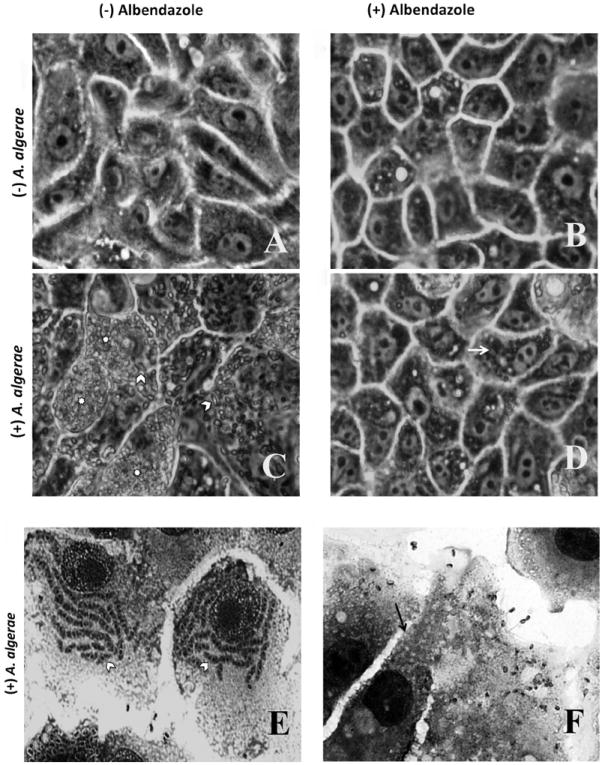Fig. 1.

Light microscopic comparison of RK13 cell cultures with or without Anncaliia algerae and with or without albendazole treatment. (A-D) Phase contrast images of live RK13 cell cultures. A. RK13 control cells, B. RK13 cells with albendazole added to culture media, these cells appear less elongated than control cells. C. Anncaliia algerae infected RK13 cells containing large quantities of organisms (*) and elongated developing parasitic stages (arrow head). D. Anncaliia algerae infected RK13 cell cultures treated with albendazole. These cells contain few elongated organisms (arrow) indicating the reduced parasite burden due to inhibition of growth by the drug. These cells also appear less elongated than cells in A or C. E-F Fixed and Giemsa stained RK 13 cell cultures. E. Anncaliia algerae infected RK13 cells containing large quantities of elongated developing parasite stages (arrow head) F. Anncaliia algerae infected RK13 cells treated with albendazole. These cells contain few identifiable parasite spores (arrow) and no elongated developing parasite stages.
